Weldon Spring Quarry/Plant/Pits (Department of Energy Site)

Congratulations to the Department of Energy (DOE) for winning the 2020 Federal Facility Excellence in Site Reuse Award for the National Priorities List (NPL) category! EPA presented the award to DOE Office of Legacy Management in an October 28, 2020 virtual ceremony to recognize the successful cleanup and restoration of the Weldon Spring Quarry/Plant/Pits Site. This is a national award that recognizes innovative thinking and cooperation among federal agencies, states, tribes, local partners, and developers that led to noteworthy restoration and reuse of contaminated sites on federal lands.
Photo Credit: Department of Energy
(1 of 10)
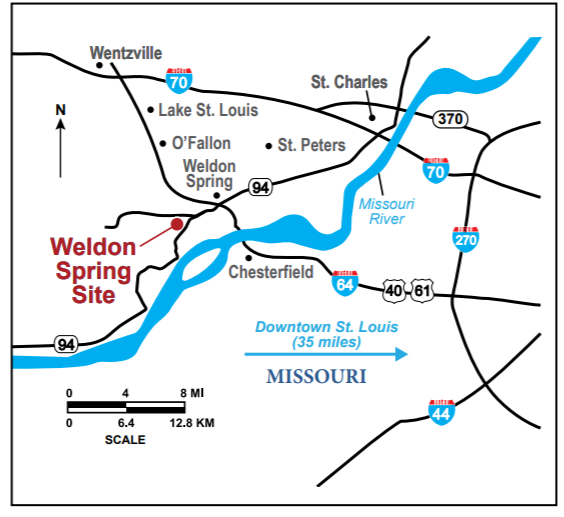
The 228-acre Weldon Spring Quarry/Plant/Pits Site in St. Charles County, Missouri, is located 35 miles west of the City of St. Louis and includes two geographically distinct DOE-owned properties: the 219-acre former Weldon Spring Chemical Plant and Raffinate Pits, and the 9-acre former Weldon Spring Quarry.
Photo Credit: Department of Energy
Source: Weldon Spring Fact Sheet (PDF) (3 pp, 959 K)
(2 of 10)

The Weldon Spring DOE Site is now open to the public and provides a variety of educational and recreational activities, such as birdwatching, hiking and biking. Since its opening in 2002, the Weldon Spring Interpretive Center has become the centerpiece of the site and includes an educational center focusing on the site’s historical legacy and providing environmental information. The Interpretive Center also provides educational and research opportunities for adults and students and has meeting rooms for community use. More than 25,000 visitors each year tour the exhibits and attend classes and special events designed for students of all ages.
Photo Credit: Department of Energy
Source: DOE, USACE Break Ground on New Interpretive Center at Weldon Spring Site
(3 of 10)
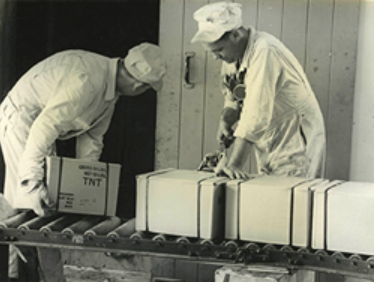
Photo Credit: Department of Energy
Source: About Weldon Spring Site Interpretive Center
(4 of 10)
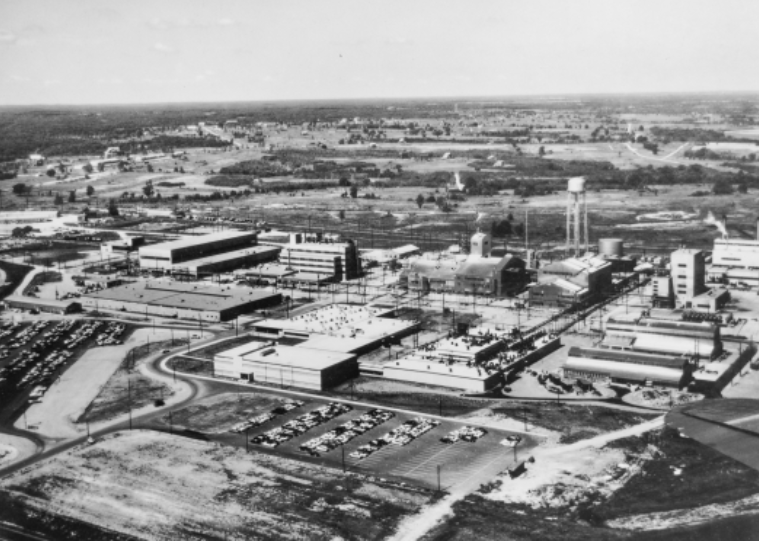
In the mid 1950’s, more than 200 acres of the former facility was transferred from the Army to the U.S. Atomic Energy Commission (AEC), which constructed the Chemical Plant to process uranium ore in support of America’s Cold War effort. In 1960, the Army transferred the Quarry to the AEC. The Quarry was mined for limestone aggregate during the facility construction and used to burn wastes from explosives manufacturing and disposal of TNT-contaminated rubble. The AEC used the Quarry from 1963 – 1969 as a disposal area for spent uranium and thorium residue.
Photo Credit: Department of Energy
Source: About Weldon Spring Site Interpretive Center
(5 of 10)
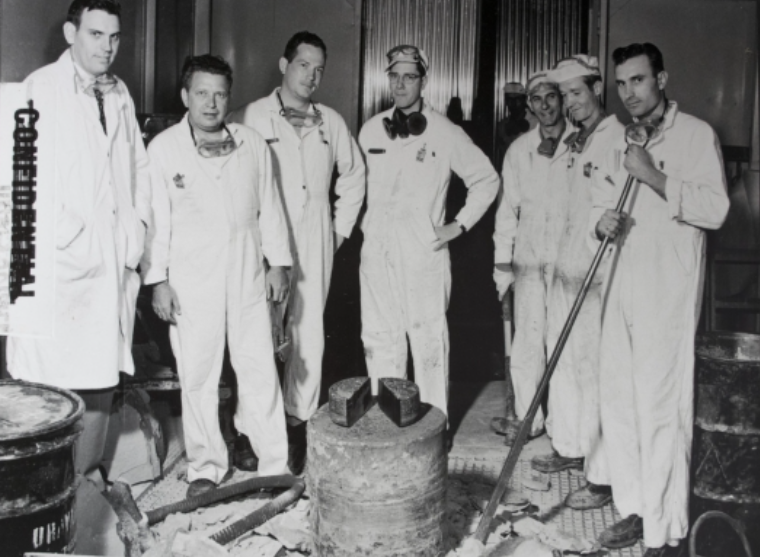
Uranium-processing operations ceased in 1966 and the AEC returned the facility to the Army. From 1968 – 1985, the AEC (which later became the DOE), managed the site under caretaker status. In 1984, the Army repaired several buildings at the Chemical Plant, decontaminated portions of the Chemical Plant and removed some of the equipment from the facility. In 1985, the Army transferred full custody of the Chemical Plant back to the DOE.
Photo Credit: Department of Energy
Source: About Weldon Spring Site Interpretive Center
(6 of 10)
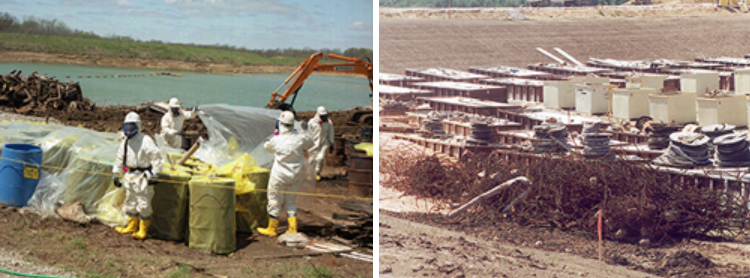
The EPA placed the Quarry and Chemical Plant areas on the Comprehensive Environmental Response, Compensation, and Liability Act NPL in 1987 and 1989, respectively. Working with the EPA and the Missouri Department of Natural Resources (MDNR), DOE began environmental cleanup activities in the late 1980’s and completed them in the early 2000’s. As part of the cleanup, 44 buildings were demolished, the foundations and ancillary features from the former Chemical Plant were removed. Approximately 116,000 cubic yards of contaminated bulk waste were removed from the Quarry.
Photo Credit: Department of Energy
Source: About Weldon Spring Site Interpretive Center
(7 of 10)
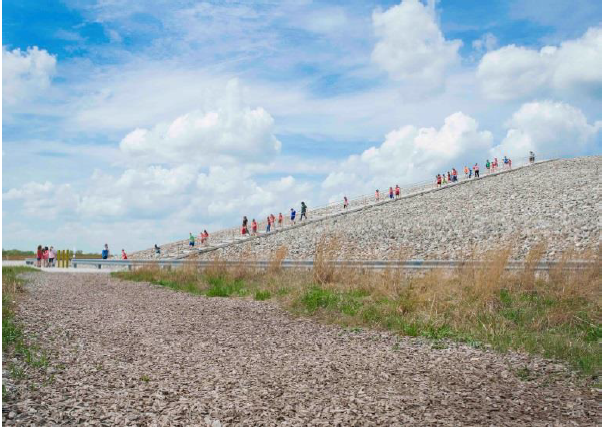
An engineered 41-acre disposal cell, designed to contain some of the site’s waste, was constructed on the Chemical Plant property. The disposal cell is surrounded by 150 acres of replanted native prairie species and is open to the public. The disposal cell is approximately 75 feet high and is a popular destination for the public to visit.
Photo Credit: Department of Energy
(8 of 10)
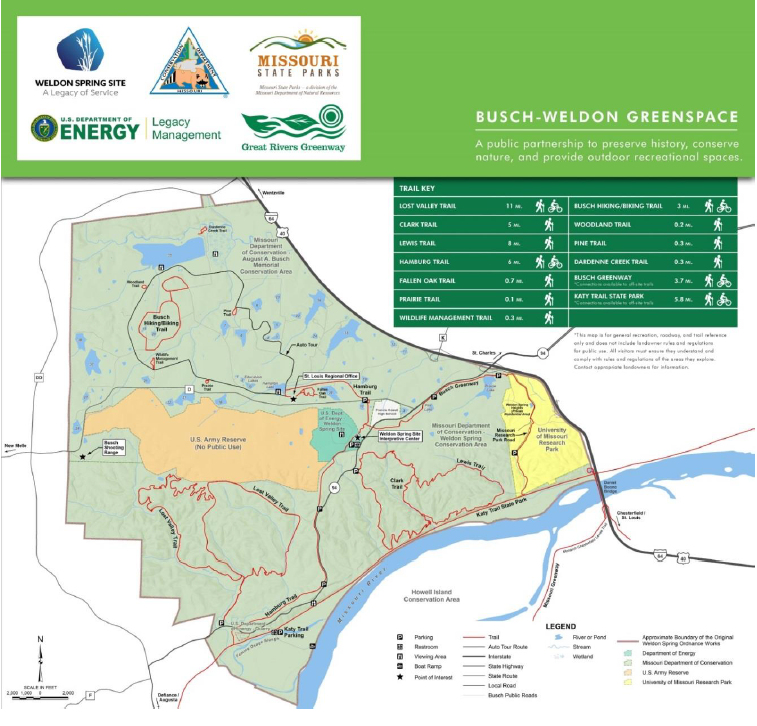
Additionally, a former road used during cleanup activities was converted to the six-mile Hamburg Trail. It is a popular trailhead used by cyclists and hikers and connects the site to the neighboring public lands, the Great Rivers Greenway trail network and Katy Trail State Park.
Photo
Credit: Department of Energy
(9 of 10)

The positive impacts a restored site can have on the local community and surrounding area are immediately evident at Weldon Spring. The parking lot is frequently filled with the vehicles of mountain bikers who use the site to access Hamburg Trail and connect to surrounding trails. People visit the site’s interpretive center for special events and ongoing exhibits and walk to the top of the disposal cell for one of the most spectacular views in St. Charles County. This once run-down contaminated processing plant has been revitalized for beneficial reuse as a community educational center and recreational site. The EPA has recognized this work by presenting the Department of Energy with the 2020 Federal Facility Excellence in Site Reuse Award for the NPL category.
Photo Credit: Department of Energy
Source: DOE, USACE Break Ground on New Interpretive Center at Weldon Spring Site and the U.S. DoE flickr
(10 of 10)
